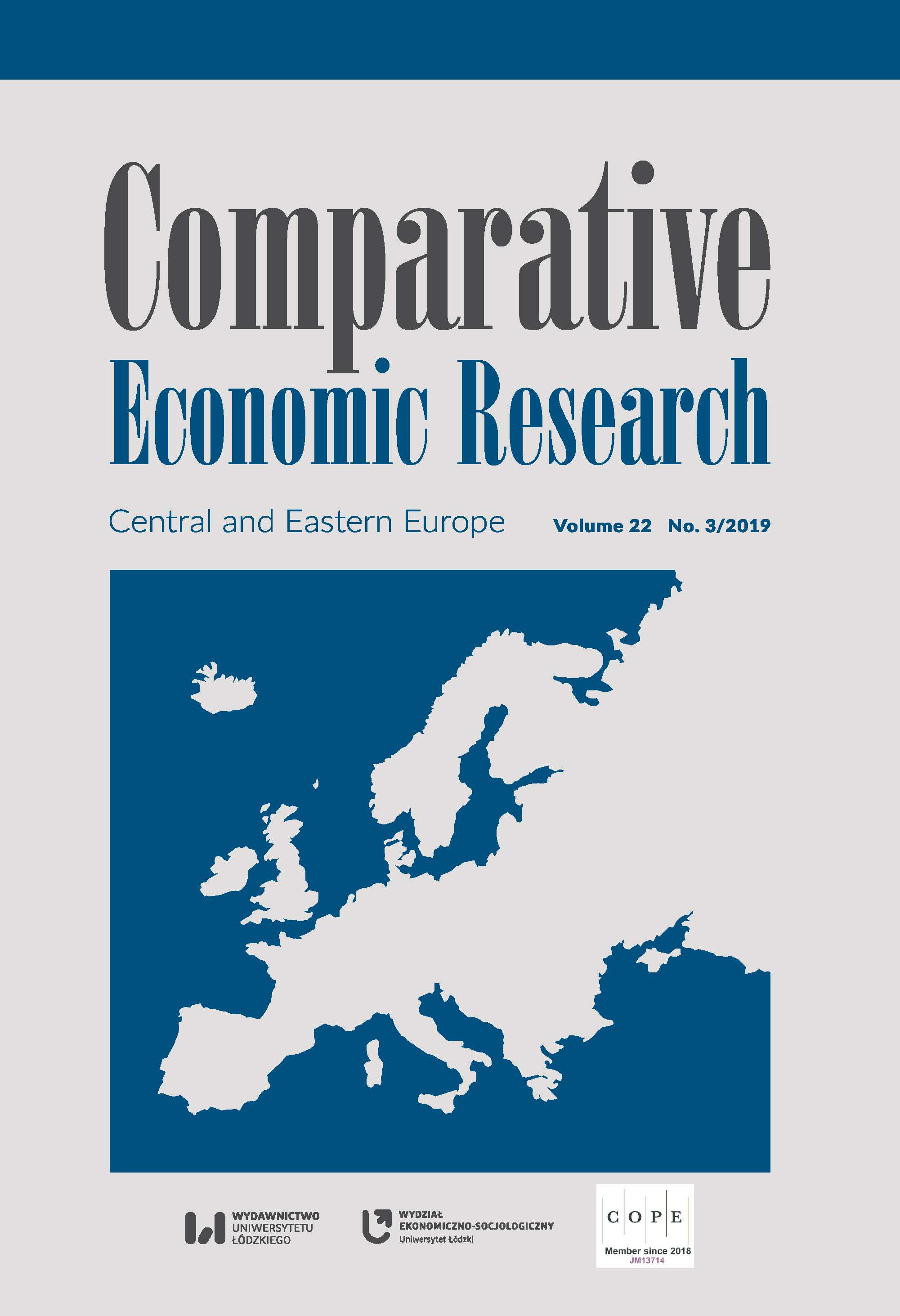Reserve Currency Status as a Safe Asset Determinant. Empirical Evidence from Main Public Issuers in the Period 2005–2017
DOI:
https://doi.org/10.2478/cer-2019-0023Keywords:
safe assets, developed economies, government bonds, reserve currenciesAbstract
Safe assets are recognized as being the cornerstone of contemporary financial systems. Due to financial globalization and massive international capital flows, they transformed into global safe assets, meaning that both demand and supply sides can be created by international investors. The article consists of two main parts. The first one concentrates on the theoretical issues of safe assets: definitions, attributes, categories of investors who search for them, as well as categories of suppliers. The theoretical considerations lead to the conclusions that only debt instruments can be used as safe assets, and due to limited substitutability between private and public issues, only the latter can perform this function properly, especially in times of stress. In the context of global safe asset considerations, it seems reasonable that only countries issuing reserve currencies can become public issuers of safe assets. The empirical analysis presented in the second part of the article confirms the theoretical predictions. A study of sovereign bond yield differentials conducted for two groups of countries (issuers of reserve currency and non‑issuers but possessing the highest credit ratings) shows that in the period 2005-2017, the spreads in the first group were depressed by the mere fact they held the status of a reserve currency issuer.
Downloads
References
Akram, T., Huiqing, L. (2018), The Dynamics of Japanese Government Bonds’ Nominal Yields, “Levy Economics Institute”, Working Paper No. 906.
Google Scholar
Alessandrini, P., Fratianni, M., Hughes Hallett, A., Presbitero, A. (2014), External Imbalances and Fiscal Fragility in the Euro Area, “Open Economies Review”, No. 25 (1).
Google Scholar
Arghyrou, M., Kontonikas, A. (2012), The EMU sovereign‑debt crisis: Fundamentals, expectations and contagion, “Journal of International Financial Markets”, Institutions and Money, 22 (4).
Google Scholar
Barrios, S., Iversen, P., Lewandowska, M., Setzer, R. (2009), Determinants of intraeuro area government bond spreads during the financial crisis. Brussels: European Commission, Directorate‑General for Economic and Financial Affairs.
Google Scholar
Beirne, J., Fratzscher, M. (2013), The pricing of sovereign risk and contagion during the European sovereign debt crisis, “Journal of International Money and Finance”, 34.
Google Scholar
Bernoth, K., Erdogan, B. (2012), Sovereign bond yield spreads: A time‑varying coefficient approach, “Journal of International Money and Finance”, 31 (3).
Google Scholar
Bernoth, K., von Hagen, J., Schuknecht, L., (2012), Sovereign Risk Premiums in the European Government Bond Market, “Journal of International Money and Finance”, 31 (5).
Google Scholar
Bogołębska, J. (2013), Nierownowagi globalne a stabilność międzynarodowego systemu walutowego, Wydawnictwo Uniwersytetu Łodzkiego, Łodź.
Google Scholar
Caballero, R., Farhi, E., Gourinchas, P. (2017), The safe assets shortage conundrum, “Journal of Economic Perspectives”, Vol. 31, No. 3, Summer.
Google Scholar
D’Agostino, A., Ehrmann, M. (2013), The pricing of G7 sovereign bond spreads the times, they are a‑changin, ECB Working Paper Series No. 1520/march.
Google Scholar
Farhi, E., Maggiori, M. (2016), A model of the international monetary system, NBER Working Paper 22295.
Google Scholar
Gelpern, A., Gerding, E., Inside safe assets, Georgetown University Law Center, www.scholarship.law.georgetown.edu/facpub/1831 (accessed: 10.07.2018).
Google Scholar
Giordano, R., Pericoli, M., Tommasino, P. (2013), Pure or Wake‑up‑Call Contagion? Another Look at the EMU Sovereign Debt Crisis, “International Finance”, 16 (2).
Google Scholar
Golec, P., Perotti, E. (2011), Safe assets: a review, ECB Working Paper Series, No. 2035, March.
Google Scholar
Gorton, G. (2016), The history and economics of safe assets, NBER Working Paper, No. 22210, April.
Google Scholar
Gourinchas, P., Jeanne, O. (2012), Global safe assets, BIS.
Google Scholar
Grabowski, W., Welfe, A. (2016), An Exchange Rate Model with Market Pressures and a Contagion Effect, “Emerging Markets Finance and Trade”, 52 (12).
Google Scholar
Holmstrom, B. (2015), Understanding the role of debt in the financial system, BIS Working Paper, No. 479.
Google Scholar
International Monetary Fund (2012), Safe assets: financial system cornerstone, Global Financial Stability Report.
Google Scholar
Kacperczyk, M., Perignon, C., Vuillemey, G. (2017), The private production of safe assets, CEPR Discussion Papers.
Google Scholar
Kilponen, J., Laakkonen, H., Vilmunen, J. (2015), Sovereign Risk, European Crisis Resolution Policies and Bond Yields, “International Journal of Central Banking”, 11 (2).
Google Scholar
Landau, J. (2013), Global liquidity: public and private, Federal Reserve Bank of Kansas City, Economic Symposium.
Google Scholar
Maltritz, D. (2012), Determinants of sovereign yield spreads in the Eurozone: A Bayesian approach, “Journal of International Money and Finance”, 31 (3).
Google Scholar
Warnock, E. (2010), How dangerous is U.S. government debt? The risks of a sudden spike in U.S. interest rates, “Capital Flows Quarterly”, Council on Foreign Relations.
Google Scholar
http://viableopposition.blogspot.com/2012/04/sovereign-debt-what-is-safe-haven.html (accessed: 12.09.2018)
Google Scholar
www.data.imf.org (accessed: 22.11.2018).
Google Scholar
Downloads
Published
How to Cite
Issue
Section
License

This work is licensed under a Creative Commons Attribution-NonCommercial-NoDerivatives 4.0 International License.











